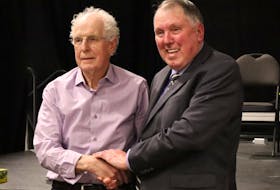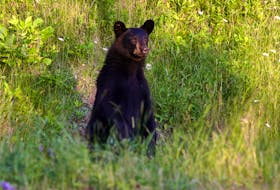WINDSOR, N.S. – Traveling to Africa and climbing to the top Mount Kilimanjaro can change a person. Just as Amherst’s Nick Cheverie.
“You see people living with the bare minimum. They have food, clothing and a home, and they’re living happily with the basic needs of life,” said Cheverie. “That has an impact on the way you live. You become more thankful for the things you have.”
Cheverie is an 18-year-old, Grade 12 student at King’s-Edgehill School in Windsor.
About 30 students and support staff from King’s-Edgehill traveled to Tanzania for a three-week leadership expedition, departing from Halifax on March 1, and returning home March 23.
Students who took the trip were in Grades 7 to 12, with ages ranging from 13 to 18.
“We had people representing three countries, Mexico, China and Canada, mostly from Nova Scotia, on the trip,” said Cheverie.
The flight took them from Halifax, to Toronto, to Ethiopia and then to the Kilimanjaro International Airport, which is located in the northern Tanzania, on the outskirts of Arusha.
“The Maasai people live in homes made out of mud and clay and sticks and whatnot, and when we got off the plane that’s what we saw.”
Besides cameras, the students brought very little technology on the trip.
“Being in that environment you really understand the important parts of living. It’s not about being attached to technology,” said Cheverie. “You’re outside all the time, you’re in nature, and you experience these nice people. It’s a totally different experience.”
The trip had three components; exploring Serengeti National Park, helping build two schools, and climbing Mount Kilimanjaro, and they lived in tents the entire trip.
“You’re living in tents in this national park and there’s wild animals coming up to your tent in the middle of the night. You can hear hyenas,” said Cheverie.
At one point on the safari their jeep got stuck in mud.
“We were attempting to push out this huge jeep and meanwhile there were two lionesses behind us with eight of their cubs, so we were looking over our shoulder and making sure we kept our eye on them because we were worried they might attack us.”
After the Serengeti, the students traveled to Natron Town, near Natron Lake, to help build schools.
“It was about 40 C. You have to wake up at 5 or 6 a.m., have breakfast, and then work until noon. Then we’d break for about three hours because the heat, and then we’d go back to work for another hour or two.”
All construction was done by hand and only a few of the locals spoke English.
“We were mixing lime and cement and gravel and fine sand, and you’re making concrete with local construction workers,” said Cheverie. “You don’t really interact through language, you communicate through the work and by giving a thumbs up or a high five.”
After helping build the schools, the students traveled to Mount Kilimanjaro.
The highest point in Africa, Mount Kilimanjaro is 5,895 metres, or 19,341 feet, above sea level, and 4,900 metres from the base to the summit.
“Being from Nova Scotia I’m not used to that elevation,” said Cheverie.
To prepare for the climb, the students took Diamox, an oral medication that helps expand the lungs and increases heart rate so climbers can get more oxygen, helping prevent altitude sickness.
It took them six days to reach the summit and return to the base.
“Ninety-nine per cent of the people who climb Kilimanjaro don’t carry their own packs, they have a porter who will carry their bag for them,” said Cheverie. “Our group carried our own packs, so I had about 40 or 50 pounds that I carried up the mountain.”
Near the summit students experience headaches, shortness of breath, nausea and hallucinations.
“Because of the altitude and lack of sleep and exhaustion, I started falling asleep,” said Cheverie. “I had headaches, I was stumbling, and I had slurred speech.”
The final push to the summit started in the darkness at 1 a.m.
“The only thing lighting the path was our headlamps and the moon, and it was -15 C.”
The students reached the summit at 7 a.m., took group photos and returned to the base.
“I tapped the sign at the summit,” said Cheverie. “I was happy, but I wanted to get out of there because it’s so draining.”
Cheverie says he was still drained after returning to Nova Scotia.
“Two weeks after summitting it’s still hard to believe I was there,” said Cheverie. “It’s one of the hardest things I’ve had to do. It was so mentally, and physical and emotionally strenuous. I reflect upon it and take time to think, ‘wow, that was a very serious feat I accomplished.’”
He says the trip changed his perspective on life.
“The experiences I had on the trip furthered the qualities of stamina, humility, empathy, and leadership, and has given me a stronger work ethic,” said Cheverie.








